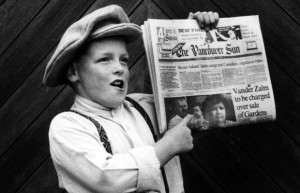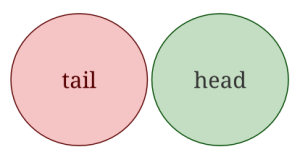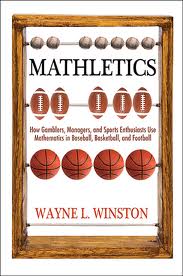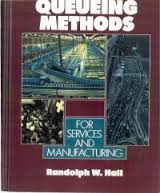Let’s say you’re a newsvendor. You sell news(papers) or some other perishable good. You used to be a “newsboy”, but now we’re gender-sensitive, so you’re a “newsvendor”.

In the morning, you buy/build/accumulate an amount of product. You want to sell all of your product (newspapers/pastries/flowers/perishable widgets) by the end of the day. All the left-over product goes to waste. But you don’t wan to run out of product too early, or you’ll miss out on potential customers who want to buy your product later in the day.
The balancing act between having too much product and having too little product makes this setup ideal for an optimization. Operations research can tell you how much of your product to have in inventory at the beginning of the day to maximize your profit.
Let’s say your product costs $c to buy/build/accumulate. And it sells for price $p to customers. Then your profit, if you stock q quantity and see demand D is: p*min(q,D)-c*q. You only sell the minimum of q, the inventory you have initially, and D, the number of customers that arrive throughout the day to buy your product.
Every lost-sale (because you were out of inventory) costs you p-c dollars, because that would have been your additional profit if you have another unit of inventory. Every unsold unit of inventory costs you c dollars, the stocking cost.
The optimal order quantity, q, is  , where
, where  is the cumulative density function for your demand for the day. The easiest way to think about this is that you want to have excess inventory (p-c)/p proportion of the time and “stock out” (sell all of your stock) c/p proportion of the time. So if your product costs you $5 to stock and sells for $8, you want to stock out 5/8 of the time. If you consistently order that amount, you will maximize your profit over time. Sometimes you will stock out and sometimes you will have excess inventory, but you will be maximizing profit. (p-c)/p is called the “critical ratio”.
is the cumulative density function for your demand for the day. The easiest way to think about this is that you want to have excess inventory (p-c)/p proportion of the time and “stock out” (sell all of your stock) c/p proportion of the time. So if your product costs you $5 to stock and sells for $8, you want to stock out 5/8 of the time. If you consistently order that amount, you will maximize your profit over time. Sometimes you will stock out and sometimes you will have excess inventory, but you will be maximizing profit. (p-c)/p is called the “critical ratio”.
Think about this the next time you see the vast stock of magazines at a bookstore. Since they never seem to stock out, c/p must be pretty low. i.e. the magazines are pure profit for them.



